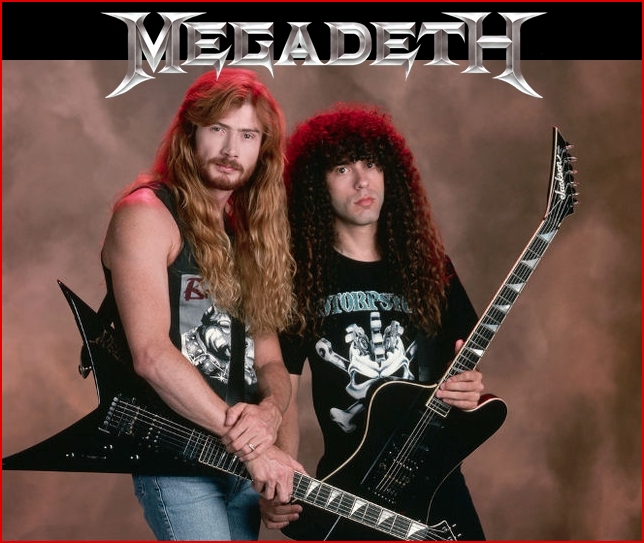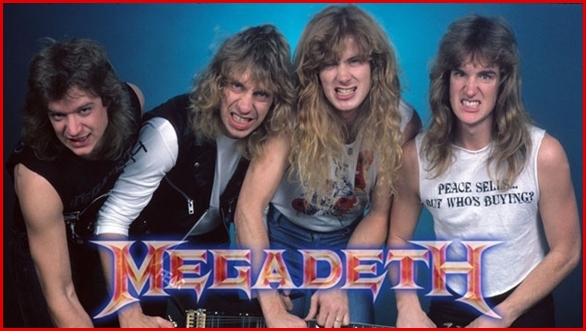As Megadeth set out to find a new guitarist to replace Young, Mustaine's drug problems arose again, threatening to derail the band's momentum. In March 1989 the frontman rammed into a vehicle occupied at the time by an off-duty police officer. Mustaine was arrested for driving while intoxicated, and eventually placed into a court-ordered rehab program. The rehab stint interrupted the search for a guitarist, but Mustaine emerged from the treatment sober for the first time in over a decade. A clear-headed Mustaine resumed his search for a fourth member, auditioning Lee Altus from Heathen and Eric Meyer of Dark Angel. Meyer was offered the job, but chose to remain with Dark Angel. The job was also offered to Slash, who opted to stay with Guns N' Roses, as well as Dimebag Darrel Abbot of Pantera. Dimebag refused to join without his brother, Vinnie Paul, so Mustaine retracted the offer as he had already hired Menza. The search continued until Mustaine auditioned shredder Marty Friedman from the Shrapnel Records band Cacophany, at the suggestion from a Capitol Records exec. Friedman wowed Megadeth's frontman, and was hired on the spot.
 Dave with New Megadeth GUitarist Marty Friedman
Dave with New Megadeth GUitarist Marty Friedman
With Friedman in the fold, Megadeth entered Rumbo Studios in March 1990 with producer Mike Clink, who had produced Guns N' Roses' stellar debut, Appetite for Destruction. It was the first time the band hit the studio sober, and the finished product would reflect that. Released on September 24, 1990, Rust In Peace debuted at No. 23 on the Billboard 200, making it the band's highest charting release yet. In addition to its commercial success, the album was also lauded by critics, who were impressed with the technical precision on the set as well as Mustaine's apparent maturation in his songwriting. The album would eventually go platinum, and earned the band its first Grammy nomination, in 1991, in the Best Metal Performance category. The and spent the remainder of 1990 on the European leg of Clash of the Titans tour, alongside Slayer, Testament and Suicidal Tendencies, before opening a handful of dates for Judas Priest late in the year. Megadeth then appeared at the second Rock In Rio festival in January 1991, before joining Slayer Anthrax and Alice in Chains for the American leg of Clash of the Titans.
Following their most extensive round of touring yet, Megadeth hit the studio in January 1992 to begin work on album No. 5. Despite the band being completely sober, and everybody contributing, the recording took longer than it should have because of outside issues. The album was recorded at The Enterprise, a studio in Burbank, at the same time the LA Riots were going on. Because of the imposed six o'clock curfew, many sessions had to be cut short. The band fought through these issues and emerged from the studio in late April, dropping the album on July 6, 1992. Titled Countdown to Extinction, Megadeth's fifth full-length was the first on which every band member made significant contributions. The album instantly became the band's highest charter, debuting at No. 2 on the Billboard 200, with first week sales of nearly 130,000. Countdown would go on to become Megadeth's highest-selling album, earning double platinum certification two years later, and is viewed by many fans as the band's most complete effort. Singles and videos were released for "Symphony of Destruction" and "Sweating Bullets", both becoming fan favorites and live show staples, as well as "Foreclosure of a Dream" and "Skin o' My Teeth". Subsequent touring included headlining dates with support from Pantera, Suicidal Tendencies and Stone Temple Pilots, as well as an opening stint for a tour headlined by Iron Maiden and Metallica. Touring wrapped in December of '83, and the band turned its attention to a sixth full-length.





